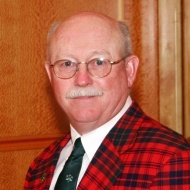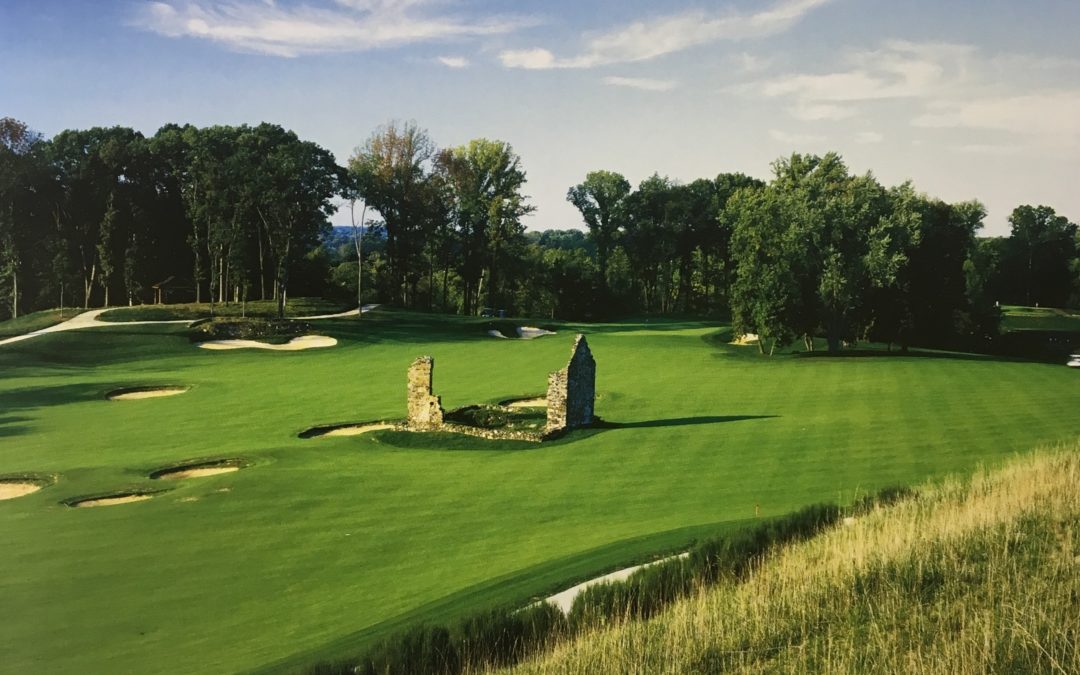David Whelchel has worked with Hurdzan/Fry Golf Course Design since 1990 and serves as senior project design manager and assistant to Dr. Hurdzan and Mr. Fry. He was the University of Arkansas men’s golf coach before becoming involved with  golf course construction and design. Whelchel was lead designer for the Little Bennett Golf Club in Hyattstown, Maryland; the Meadows Golf Club for Grand Valley State University in Grand Rapids, Michigan; and Gibson Bay Golf Course in Richmond, Kentucky. He also assisted Dr. Hurdzan on the design of Lassing Pointe Golf Club in Union, Kentucky; and assisted Mr. Fry on the design of the Fieldstone Golf Club in Wilmington, Delaware. He was lead designer for Tallwoods Golf & Country Club, north of Sydney, Australia in the resort town of Forster-Tuncurry. Whelchel is currently lead designer for a new eighteen holes at I Roveri Golf Club in Torino, Italy, that is scheduled to open in 2009.
golf course construction and design. Whelchel was lead designer for the Little Bennett Golf Club in Hyattstown, Maryland; the Meadows Golf Club for Grand Valley State University in Grand Rapids, Michigan; and Gibson Bay Golf Course in Richmond, Kentucky. He also assisted Dr. Hurdzan on the design of Lassing Pointe Golf Club in Union, Kentucky; and assisted Mr. Fry on the design of the Fieldstone Golf Club in Wilmington, Delaware. He was lead designer for Tallwoods Golf & Country Club, north of Sydney, Australia in the resort town of Forster-Tuncurry. Whelchel is currently lead designer for a new eighteen holes at I Roveri Golf Club in Torino, Italy, that is scheduled to open in 2009.
We were preparing to start work on an absolutely beautiful piece of land just north of Mexico City. The project had been commissioned by two wealthy Mexican businessmen who had bought the land. During the design process, we encountered a unique problem: there were squatters inhabiting the site at the time we were trying to build the course.
The squatters were living in very bad conditions. They had no running water, they were sleeping in shacks, and most only owned maybe a cow and a few chickens.
The Mexican businessmen who bought the land had agreed, in the purchase contract, to build houses for the squatters with running water and plumbing and create a school. Everyone involved would be getting a good deal: we would build our golf course, and the squatters would get improved conditions. Unfortunately, the squatters did not want to give up their land. Due to the questionable safety of the area, we were escorted by a bodyguard, Sergio, whenever we made visits to the site. There were about ten members of our design and construction team on foot surveying the site when, as we were examining the spot for the third green, Sergio signaled for our team’s attention. He pointed frantically. In the distance, about a half a mile away, we could see a group of about a hundred Mexicans, some even on horses, headed our way. They were carrying pitchforks and machetes. Clearly, we were not wanted on their land!
Sergio led our group to some bushes for us to hide behind. I could tell some of the members of our group were getting quite nervous. We immediately radioed for the helicopter, but we were quietly aware of the ominous fact that only five people could fit in the chopper at one time.
The helicopter landed and rescued as many people as could reasonably fit on board, so the first bunch was flown away safely. We knew it would be about ten minutes before the chopper would drop them off and come back to pick the rest of us up. I stayed behind because I wasn’t as too worried about the situation. I figured we were with Sergio, who was armed, and I knew he’d shoot if he had to.
Sergio, another engineer, and I waited for about seven minutes. By that time the angry mob of squatters was about three hundred meters away. We could see them in their white outfits and hats, and boy, did they look angry. Thankfully, at the same time, we heard the helicopter coming. Unfortunately the squatters were close enough that they, too, heard the helicopter coming, and when it hovered near the ground for us to jump in the mob started charging toward us. We climbed into the helicopter but I couldn’t get the door shut. so the pilot said to
“Just hold it shut!” the pilot yelled as we took off.
The mob was right there, swiping and grasping at us. I thought the blades of the helicopter were going to chop someone’s head off! Thankfully, we all made it back to the main site safely, but needless to say, the project died after that.

